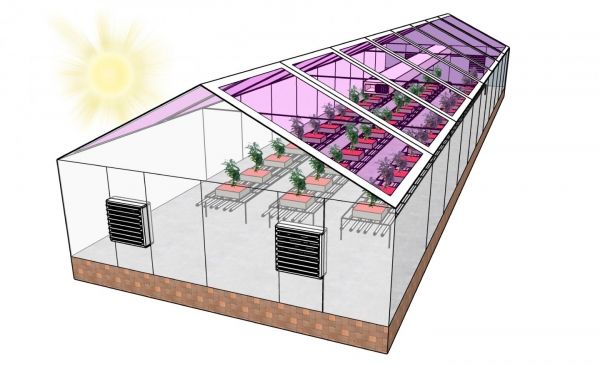Many greenhouses could become energy neutral by using see-through solar panels to harvest energy – primarily from the wavelengths of light that plants don’t use for photosynthesis. Those are the findings of a new modeling study conducted by engineering, plant biology and physics researchers at North Carolina State University.
“Plants only use some wavelengths of light for photosynthesis, and the idea is to create greenhouses that make energy from that unused light while allowing most of the photosynthetic band of light to pass through,” says Brendan O’Connor, corresponding author of the study and an associate professor of mechanical and aerospace engineering at NC State. “We’re able to do this by using organic solar cells, because they allow us to tune the spectrum of light that the solar cell absorbs – so we can focus on using mostly wavelengths of light that plants don’t use. However, until now it wasn’t clear how much energy a greenhouse could capture if it was using these semitransparent, wavelength selective, organic solar cells.”
To address that question, researchers used a computational model to estimate how much energy a greenhouse could produce if it had semitransparent organic solar cells on its roof – and whether that would be enough energy to offset the amount of energy the greenhouse required to operate effectively. The model was developed to estimate energy use for greenhouses growing tomatoes at locations in Arizona, North Carolina and Wisconsin.
Read more at North Carolina State University
Image: Many greenhouses could become energy neutral by using see-through solar panels to harvest energy - primarily from the wavelengths of light that plants don't use for photosynthesis. In some places this could make greenhouses energy neutral, or even allow them to generate enough electricity to sell it back to the grid -- creating a new revenue stream for growers. (Credit: Brendan O'Connor, NC State University)


